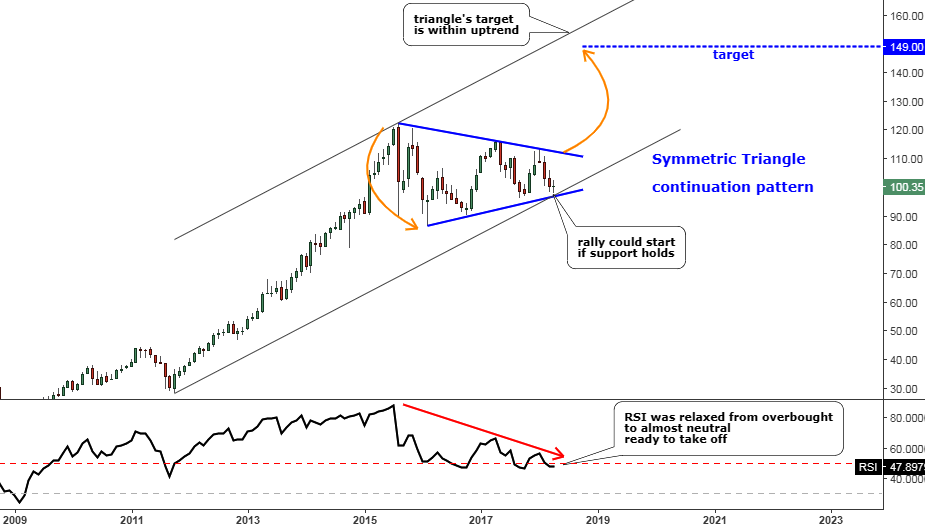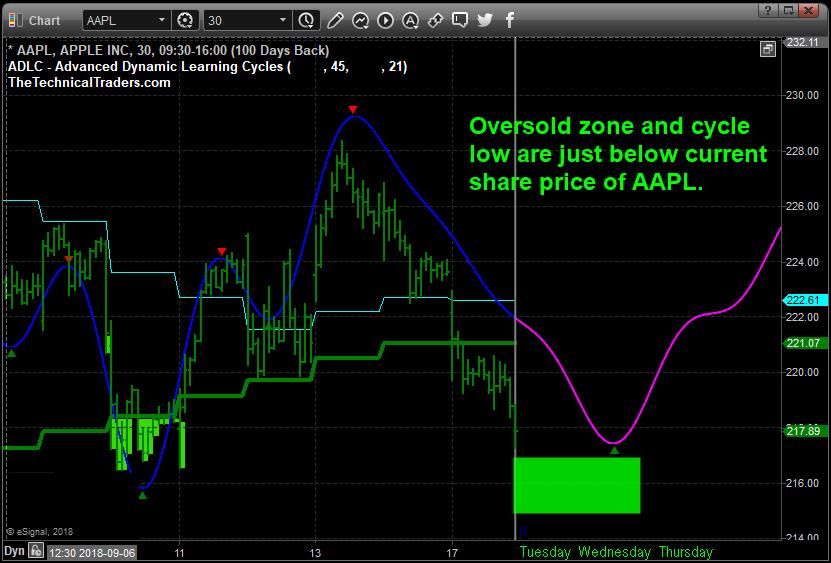With the S&P 500 soaring roughly 8% year-to-date, stocks have experienced a solid start in 2024, with investors reaping the rewards of putting their money in high-growth stocks. This positive momentum is expected to persist throughout the rest of the year and beyond.
Amid this market rally, chip giant NVIDIA Corporation (NVDA) and entertainment powerhouse Netflix, Inc. (NFLX) have emerged as beacons of growth, capturing investor’s bullish sentiment.
Although operating in distinct industries with unique business models, these titans share striking parallels in their journey to success. Their unwavering commitment to excellence, combined with strategic flexibility, has catapulted them to the forefront of their respective industries.
Therefore, let’s explore the fundamentals of NVDA and NFLX to unveil the ultimate growth contender of the month.
Last Reported Quarterly Results
In the fiscal fourth quarter that ended January 28, 2024, NVDA witnessed a staggering 265.3% year-over-year surge in its topline, totaling $22.10 billion. The company’s non-GAAP net income surged to $12.84 billion and $5.16 per share, marking a remarkable increase of 490.6% and 486.4% from the prior-year quarter, respectively.
As of January 28, 2024, NVDA’s cash, cash equivalents and marketable securities stood at $25.98 billion.
Conversely, for the fourth quarter that ended December 31, 2023, NFLX’s revenue rose 12.5% year-over-year to $8.83 billion. The company also experienced significant growth in net income and EPS compared to the previous year’s quarter, amounting to $937.84 million and $2.11, respectively. As of December 31, 2023, NFLX held $7.12 billion in cash and cash equivalents.
Growth Trajectory
NVDA, the reigning chip powerhouse, is currently one of the market's most sizzling stocks. Since its inception in 1993, NVDA has spearheaded cutting-edge computer chip technology, pushing the boundaries of graphics-heavy video games to unparalleled heights.
However, with the emergence of Artificial Intelligence (AI), these chips have swiftly ascended to newfound prominence, reflecting NVDA's enduring innovation and strategic adaptability. The company stands as a global giant in the production of Graphics Processing Units (GPUs) renowned for their ability to handle complex mathematical operations, powering captivating visuals across devices.
These advanced chips have become indispensable for training state-of-the-art AI programs such as ChatGPT and Gemini, underscoring NVDA’s pivotal role in driving the AI revolution forward. Leveraging AI to its advantage, NVDA’s earnings reports have managed to exceed expectations throughout 2023.
Furthermore, NVDA’s shares soared roughly 200% over the past year, buoyed by the company’s stellar earnings performance and solid demand for its AI chips. This surge attracted both institutional and retail investors, driving up share prices. With a market cap of around $2 trillion, NVDA has now claimed the title of the world's third most valuable company.
On the other hand, commanding a market cap of over $268 billion, NFLX stands as a pioneer in the streaming entertainment space, revolutionizing how audiences consume content worldwide. With a vast library of original programming and a global subscriber base, NFLX enjoys unrivaled dominance in the industry.
In a recent conference, NFLX’s CFO Spencer Neumann elaborated on NFLX’s trajectory under its revamped Co-CEO structure and its ambitious vision for future expansion. Neumann emphasized the smooth transition to the new leadership structure and NFLX’s dedication to broadening its entertainment repertoire, spanning films, TV series, gaming endeavors, and live content experiences.
Over the last few years, the tech company has adopted several strategic approaches to bolster its financial health. NFLX’s growth strategy hinges significantly on its substantial investment in content, with an annual expenditure projected at approximately $17 billion.
In addition, Netflix is venturing into new revenue avenues, including the introduction of an ad-supported subscription tier and measures aimed at bolstering monetization, such as combating password sharing.
Moreover, despite its risky move of cracking down on password sharing, NFLX’s latest earnings report revealed a surge of 13 million new subscribers in the final quarter of 2023, marking its most substantial growth since 2020. While initially met with resistance, the strategic move has been designed to counteract declining subscribership.
Greg Peters, NFLX’s Managing Director, emphasized during the earnings call that the company's top priority regarding ads is scalability. He highlighted a 70% quarter-on-quarter growth in the last quarter, following a similar growth trend in the previous quarter, indicating a positive growth trajectory for the company.
Competitive Landscape
In the dynamic worlds of technology and entertainment, both NVDA and NFLX are fiercely vying for supremacy in their domains.
The soaring popularity of generative AI owes a significant debt to NVDA and its groundbreaking GPUs. With skyrocketing demand and tight supply, NVDA's GPU H100 has emerged as a highly sought-after and premium-priced commodity, propelling NVDA to trillion-dollar status for the very first time.
With tech giants such as Microsoft Corporation (MSFT), Meta Platforms Inc. (META), OpenAI, Amazon.com Inc. (AMZN), and Alphabet Inc. (GOOGL) heavily relying on NVDA’s GPU chips to power their generative AI planforms, these companies have started developing their own AI processors.
In addition, NVDA faces stiff competition from other chip makers like Advanced Micro Devices, Inc. (AMD) and Intel Corporation (INTC), all striving to release the newest, most efficient, and potent AI chips to dominate the market.
Meanwhile, NFLX confronts fierce competition from fellow FAAMG (Meta (formerly Facebook), Apple Inc. (AAPL), Amazon, Microsoft, and Alphabet’s Google) heavyweights. The streaming arena is now brimming with contenders like Apple TV+, Amazon Prime Video, and YouTube Premium, launched by Apple, Amazon, and Google, respectively.
This fierce rivalry compels NFLX to perpetually innovate and enrich its content library to retain its crown as the streaming kingpin. Furthermore, the mounting expenses of content licensing and the delicate balance between original productions and licensed content present enduring hurdles for NFLX to overcome.
Bottom Line
As evidenced by their latest quarterly results, both NVDA and NFLX continue to deliver impressive performances, standing as formidable players in their respective industries, with their growth trajectories reflecting their strategic prowess and market dominance.
NVDA's cutting-edge GPU chips have propelled it to the forefront of the AI revolution, with staggering earnings growth and market capitalization making it a top contender in the tech landscape.
Fueled by these promising prospects, NVDA’s shares soared to unprecedented heights last month, with its market cap skyrocketing by a Jaw-dropping $267 billion in a single day. This remarkable surge nearly matched the entire market cap of NFLX, reflecting immense investor confidence in NVDA’s prospects.
NFLX, on the other hand, dominates the streaming entertainment space with its vast content library and global subscriber base. Despite facing stiff competition from tech giants and emerging streaming platforms, NFLX remains focused on expansion and innovation, which is evident in its ambitious growth strategies and robust financial health in the last reported quarter.
While challenges and competition persist, NVDA and NFLX demonstrate resilience, adaptability, and a relentless drive for success, making them compelling options for investors seeking growth opportunities in the dynamic worlds of technology and entertainment.
However, NVDA’s shares are trading at a much higher valuation than NFLX. For instance, in terms of forward Price/Sales, NVDA is trading at 19.37x, 178.7% higher than NFLX’s 6.95x. Likewise, NVDA’s forward Price/Book ratio of 24.32 is 116.2% higher than NFLX’s 11.25x.
The higher valuation of NVDA compared to NFLX indicates investor confidence in NVDA's future growth potential, leading investors to be willing to pay a premium price for its shares. However, it also signals that NVDA's anticipated growth might already be factored into its stock price, potentially dimming its attractiveness compared to NFLX.
Furthermore, while NVDA’s ascent captivates the stock market and propels the S&P 500 Index to unprecedented highs, Barclays research analyst Sandeep Gupta anticipates that demand for AI chips will stabilize once the initial training phase concludes.
Gupta underscores that during the inference stage, the computational demand is lower compared to training, suggesting that high-powered PCs and smartphones could suffice for local inference tasks. Consequently, this scenario may reduce the urgency for NVDA’s expanding GPU facilities.
As a result, investors might be banking on future growth that could potentially fail to materialize. With that being said, NFLX may emerge as a more promising growth stock compared to NVDA.


